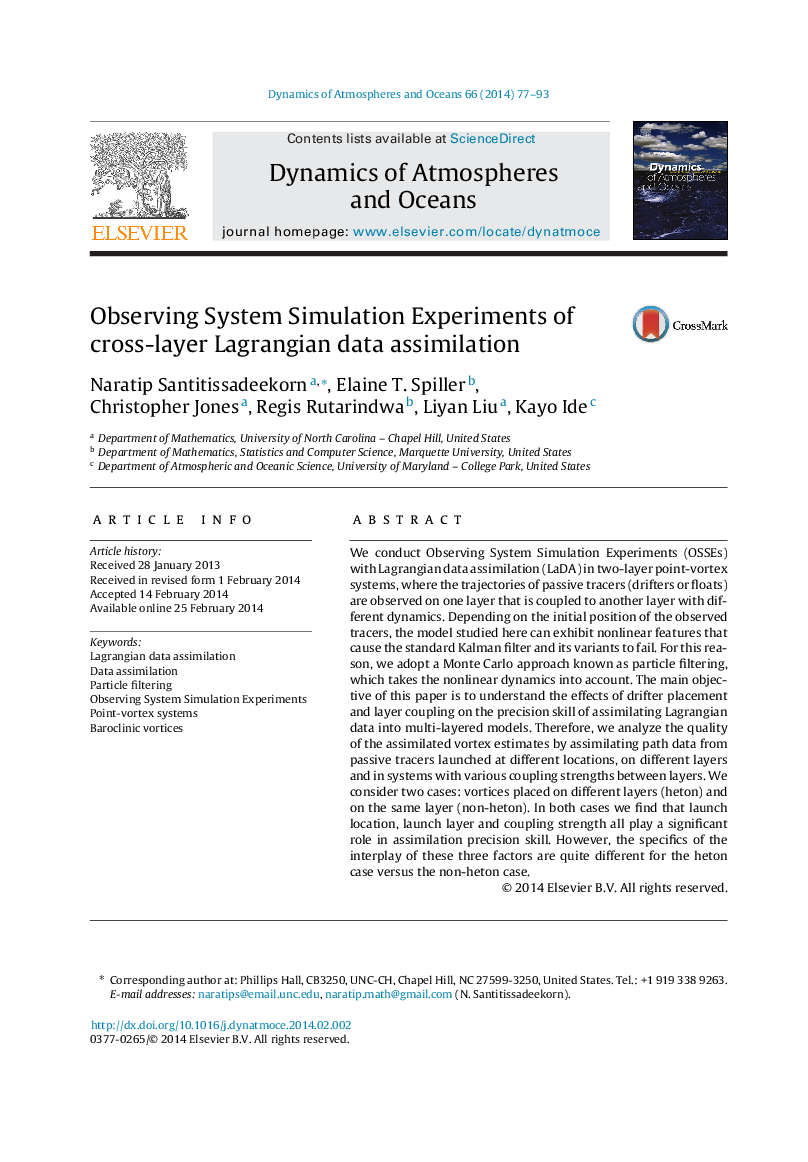| Article ID | Journal | Published Year | Pages | File Type |
|---|---|---|---|---|
| 4674030 | Dynamics of Atmospheres and Oceans | 2014 | 17 Pages |
•Effects of coupling strength and launch position on data assimilation in two-layer point-vortex system.•In the non-heton case the ability to track the vortices degrades as the coupling strength decreases.•In the heton case, a too strong coupling strength can result in poor assimilation results.
We conduct Observing System Simulation Experiments (OSSEs) with Lagrangian data assimilation (LaDA) in two-layer point-vortex systems, where the trajectories of passive tracers (drifters or floats) are observed on one layer that is coupled to another layer with different dynamics. Depending on the initial position of the observed tracers, the model studied here can exhibit nonlinear features that cause the standard Kalman filter and its variants to fail. For this reason, we adopt a Monte Carlo approach known as particle filtering, which takes the nonlinear dynamics into account. The main objective of this paper is to understand the effects of drifter placement and layer coupling on the precision skill of assimilating Lagrangian data into multi-layered models. Therefore, we analyze the quality of the assimilated vortex estimates by assimilating path data from passive tracers launched at different locations, on different layers and in systems with various coupling strengths between layers. We consider two cases: vortices placed on different layers (heton) and on the same layer (non-heton). In both cases we find that launch location, launch layer and coupling strength all play a significant role in assimilation precision skill. However, the specifics of the interplay of these three factors are quite different for the heton case versus the non-heton case.
